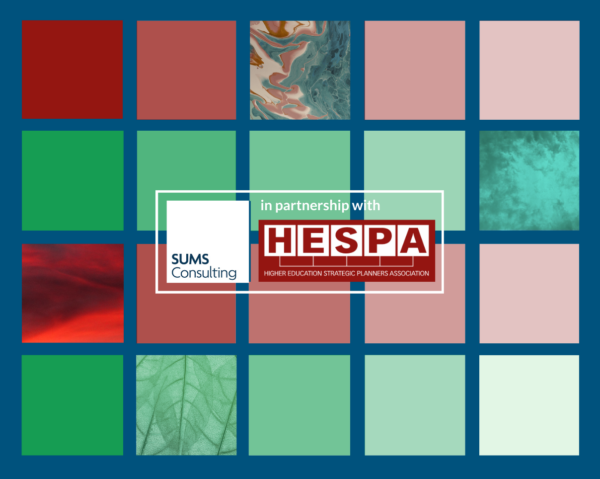
| Date | Author |
|---|---|
| 1st November 2023 | Dr Thomas Owen-Smith, SUMS Consultant |
(2-minute read)
Our new report, released in partnership with the Higher Education Strategic Planners Association (HESPA), looks at the current state of sector practice for integrating climate as a strategic driver and makes recommendations to support universities’ journey towards being net zero, climate resilient institutions.
Read the Integrating climate into strategy and planning in universities report
Climate change is amongst the most important strategic drivers for universities and all organisations.
But it is difficult to integrate into strategy and planning because of its scale and complexity, and the fact that it touches every part of an institution’s work.
Our new report, released today in partnership with the Higher Education Strategic Planners Association (HESPA), looks at the current state of sector practice for integrating climate as a strategic driver and makes recommendations to support universities’ journey towards being net zero, climate resilient institutions.
A separate Integrating climate into strategy and planning in universities Executive Summary is also available.
(Full report 30-minute read)
Key findings include:
- Measures for integrating climate into institution strategy and planning are at variable stages of adoption across the sector. While some are now widely adopted and can be considered standard practice, others are diffusing or emergent, used at only a small number of institutions at present.
- In institutions’ self-assessment of the effectiveness of their practice around integrating climate as a strategic driver, around half (47.9%) agree or strongly agree their practice is effective, around one third (32.9%) disagree or strongly disagree, with the rest (19.2%) expressing no strong view.
- A wide range of models, roles and responsibilities for leadership around climate is evident across the sector. This is due to the agenda’s relative novelty and the diversity of institutions’ size, overall structures and models for the sustainability and strategic planning functions in particular.
- No specific model has a definitive relationship with higher integration and self-efficacy scores, in terms of which role or function leads the strategic agenda. The variable which does appear linked to higher scores is collaboration between the planning and sustainability teams, which is a stronger factor for progress than leadership by any specific function.
Building on this work, HESPA and SUMS have established a Community of Practice for Sustainability in Strategy and Planning. The group is aimed at strategic planners and colleagues, and membership is open to HESPA or SUMS Consulting member institutions.
Read the full Integrating sustainability into strategy and planning report here.
SUMS offers sustainability services in higher education and strategy and planning services designed for universities.
If you’d like to discuss how we could help you, get in touch with sums@reading.ac.uk.








